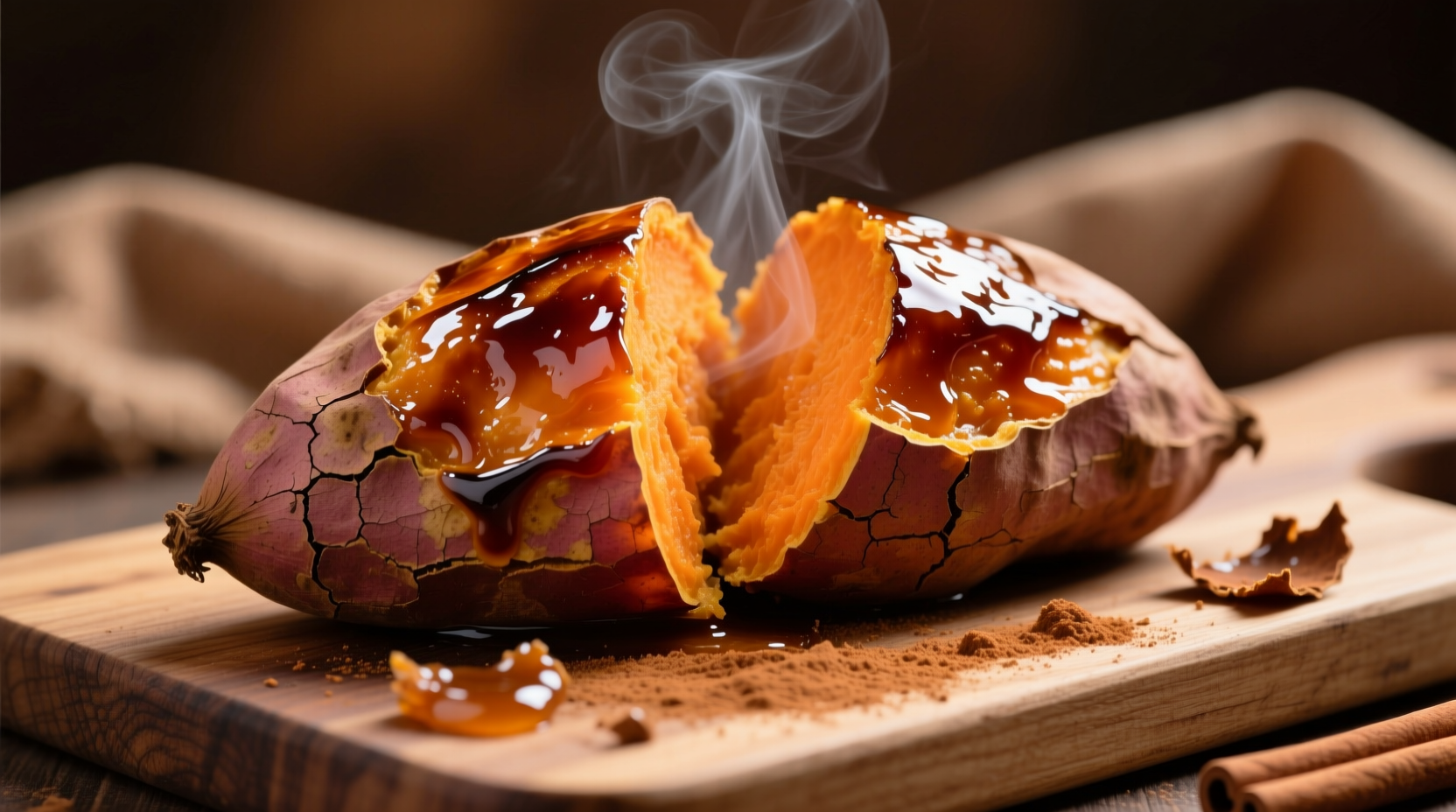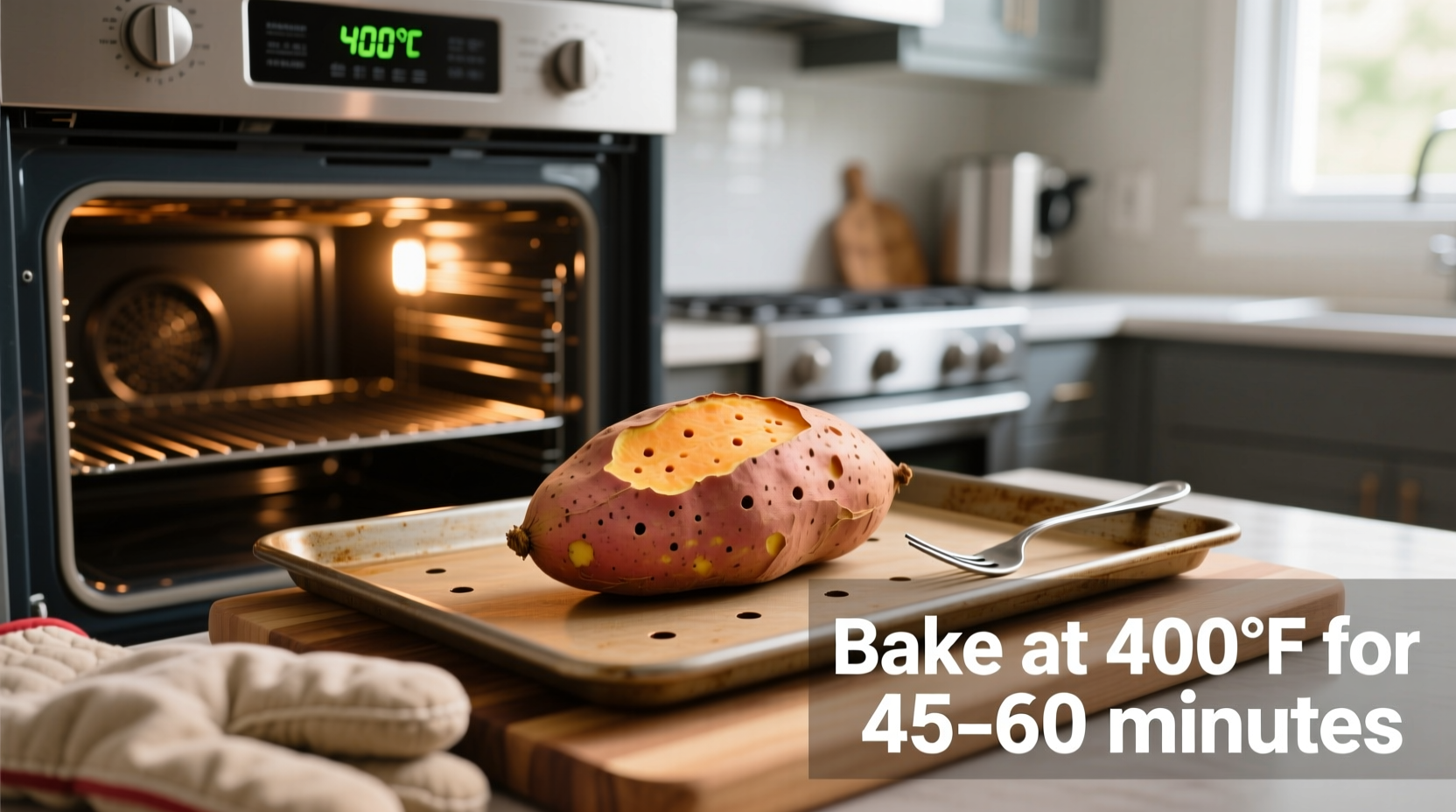The Foolproof Method for Perfect Oven-Baked Sweet Potatoes
Nothing beats the natural sweetness and creamy texture of a perfectly baked sweet potato. Unlike boiling or microwaving, oven baking concentrates flavors and creates that ideal balance of caramelized exterior and fluffy interior. Follow this professional chef-tested method for consistently delicious results every time.
Why Oven Baking Beats Other Methods
While you can cook sweet potatoes in various ways, baking unlocks their full potential. According to the USDA Agricultural Research Service, the dry heat of an oven preserves more nutrients compared to boiling, where water-soluble vitamins leach into cooking water. Baking also develops complex flavor compounds through the Maillard reaction, creating richer, more nuanced sweetness.
| Cooking Method | Texture Result | Nutrient Retention | Flavor Development |
|---|---|---|---|
| Oven Baking | Creamy interior, slightly caramelized skin | High (85-90%) | Excellent (Maillard reaction) |
| Boiling | Uniformly soft | Moderate (60-70%) | Good |
| Steaming | Firm yet tender | High (80-85%) | Fair |
| Microwaving | Soft but sometimes uneven | Moderate (70-75%) | Poor |
Gathering Your Equipment and Ingredients
You'll need just three essentials for perfect baked sweet potatoes:
- Medium-sized sweet potatoes (about 5-8 ounces each)
- Baking sheet with aluminum foil (optional but recommended for easy cleanup)
- Fork for piercing
Choose sweet potatoes that feel heavy for their size with firm, unblemished skin. According to research from University of Minnesota Extension, medium-sized potatoes (5-8 ounces) cook more evenly than very large ones, which often have undercooked centers.
Step-by-Step Baking Process
Preparation: The Critical First Step
Thoroughly wash sweet potatoes under cool running water, using a vegetable brush to remove any dirt. This step is crucial—skip it and you'll transfer soil particles to your fork when testing for doneness. Dry completely with a clean towel; moisture on the skin can create steam pockets that lead to uneven cooking.
Pierce each potato 4-5 times with a fork, making holes about ¼-inch deep. This allows steam to escape during baking, preventing potential bursting. Don't skip this safety step—potatoes contain significant moisture that turns to steam in the oven.
Baking: Temperature and Timing Explained

Place potatoes directly on the middle oven rack with a baking sheet lined with foil on the rack below to catch any drips. The direct rack placement ensures even heat circulation. Bake at 400°F (204°C) for 45-60 minutes, depending on size.
Here's how to determine exact timing based on potato size:
- Small (4-5 oz): 35-45 minutes
- Medium (6-7 oz): 45-55 minutes
- Large (8+ oz): 55-65 minutes
For those wondering how long to bake sweet potatoes at 375 degrees, increase cooking time by 10-15 minutes. Lower temperatures require longer baking but can prevent exterior burning with very large potatoes.
Checking for Perfect Doneness
The most reliable test: gently squeeze the potato (using oven mitts!). It should yield slightly under pressure. Alternatively, insert a fork or skewer—it should slide in with no resistance. The skin will appear slightly shrunken with small caramelized spots.
Many home cooks ask how to tell when sweet potatoes are done baking. Avoid the common mistake of judging solely by time—always verify with the squeeze or fork test. Potatoes continue cooking from residual heat after removal from the oven, so pull them out just before they reach perfect tenderness.
Serving and Storage Tips
Let baked sweet potatoes rest for 5-10 minutes before serving. This allows the starches to set slightly, improving texture. Slice open and fluff the interior with a fork before adding your favorite toppings.
For meal prep enthusiasts wondering can you bake sweet potatoes ahead of time, the answer is yes. Store cooled baked potatoes in airtight containers in the refrigerator for up to 5 days. Reheat in a 350°F oven for 15-20 minutes or microwave for 2-3 minutes.
Common Mistakes to Avoid
Even experienced cooks make these errors when baking sweet potatoes:
- Wrapping in foil: Creates steamed texture rather than baked, resulting in less flavorful, waterlogged potatoes
- Skipping the pierce step: Risk of potatoes bursting from built-up steam pressure
- Overcrowding the oven: Prevents proper air circulation, leading to uneven cooking
- Not adjusting for oven variations: Calibrate your timing based on your specific oven's performance
Professional chefs at culinary institutions like the Culinary Institute of America emphasize that patience is key—rushing the process by increasing temperature often results in burnt exteriors with undercooked centers.
Nutritional Benefits of Baked Sweet Potatoes
Baking preserves more nutrients than water-based cooking methods. A medium baked sweet potato provides:
- Over 400% of your daily vitamin A needs
- Substantial vitamin C and manganese
- 4 grams of dietary fiber
- Natural sweetness without added sugars
According to the USDA FoodData Central, baking actually increases the bioavailability of beta-carotene compared to raw consumption, making this cooking method nutritionally superior.
Perfect Pairings for Your Baked Sweet Potato
While delicious on their own, these combinations elevate baked sweet potatoes:
- Classic: Butter, cinnamon, and a touch of maple syrup
- Savory: Black beans, avocado, and lime juice
- Protein boost: Greek yogurt and toasted pecans
- Mediterranean: Feta cheese, olives, and fresh herbs
For those exploring how to prepare sweet potatoes for baking with different flavor profiles, try rubbing the skin with olive oil and herbs before baking for infused savory notes.











 浙公网安备
33010002000092号
浙公网安备
33010002000092号 浙B2-20120091-4
浙B2-20120091-4